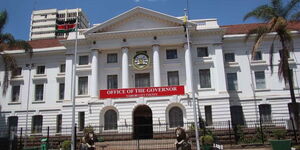The Ministry of Health on Wednesday, March 22 announced a raft of measures in response to an outbreak of the Marburg Virus in the neighbouring nation of Tanzania.
In a statement by Acting Director General in the Ministry of Health Dr Patrick Amoth, the government urged Kenyans to be on high alert and to observe signs and symptoms associated with the virus.
In particular, the State singled out the risk posed by trans-border buses and people moving across borders through the border points of Kenya and her neighbours.
Dr Amoth singled out Sirare and Isebania among the towns put on high alert owing to the flow of both human and motorised traffic accessing the neighbouring nations through the designated border points.
“ The town is served by the Bukoba Airport and regular ferry connections to and from Mwanza that has connections with Kisumu in Kenya," the statement read in part.
“There are a number of buses that ply the route between Bukoba and Kampala in Uganda on a daily basis and some of which end up in certain destinations in Kenya.”
The disease, according to Dr Amoth, has since affected eight people and claimed five lives in Bukoba, Kagera Province in the North Western part of Tanzania and the South-Western shores of Lake Victoria.
The onset symptoms of the virus include high fever, severe headache, severe malaise and muscle aches. In addition, the government warned that symptoms such as severe watery diarrhoea, abdominal pain and cramping, nausea and vomiting may follow shortly after contraction.
Between the fifth and seventh days, patients with the Marburg virus experience severe bleeding from multiple areas which often leads to death.
Many patients, the Ministry added, develop severe bleeding manifestations between the fifth and seventh day, and fatal cases usually have some form of bleeding, often from multiple areas.
There is currently no specific treatment or vaccine approved for the treatment of the virus. However, the Ministry assured that supportive care - which includes rehydration with oral or intravenous fluids and treatment of specific symptoms, improves survival chances.
Further, the ministry assured members of the public of timely updates on information pertaining to the spreading of the virus and various ways of managing it.
"Kenya has since activated its surveillance and response mechanisms and enhanced surveillance at all border points between Kenya, Tanzania and Uganda," Amoth added.
The government urged Kenyans to report any visible signs and symptoms related to the virus to the health facility for assessment and management.












